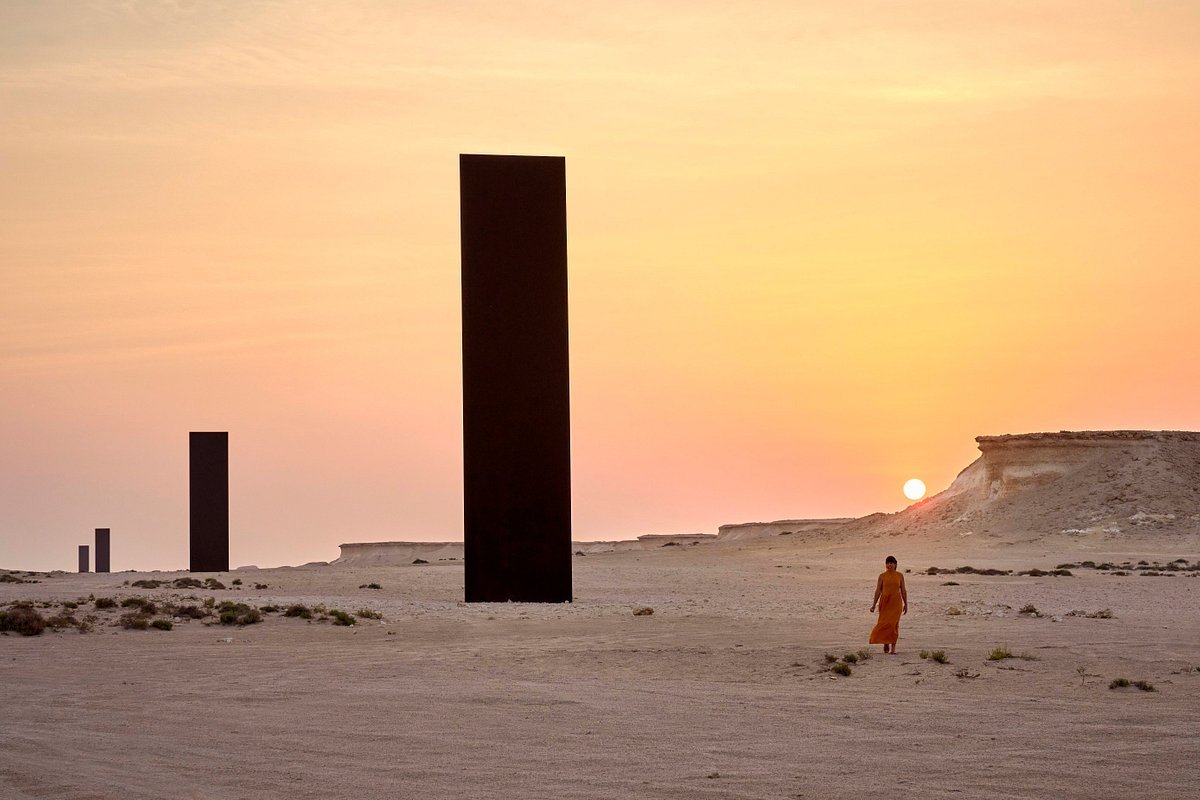Qatar is a nation of breathtaking contrasts — where ancient culture meets futuristic innovation, and golden deserts stretch into modern skylines. Among its many hidden gems, one site stands out not only for its scale and majesty but also for its cultural significance: Richard Serra’s “East-West/West-East” installation in the heart of the Qatari desert.
Whether you’re an art enthusiast, a cultural explorer, or simply someone seeking a surreal desert escape, Discover Richard Serra in the Desert is an experience unlike any other. Let us guide you through this striking blend of contemporary art and timeless natural beauty.
Who is Richard Serra?
Before diving into the desert sands of Qatar, it’s important to understand the artist behind this magnificent creation. Richard Serra is an internationally renowned American sculptor known for his monumental works in steel and metal. His pieces are celebrated for how they interact with space, light, and the viewer’s movement. Serra’s sculptures don’t just sit in a space — they transform it.
By installing his work in the remote desert of Qatar, Serra took his vision to a new extreme, crafting an experience that feels otherworldly yet deeply human.
The Masterpiece: East-West/West-East
Located in the Brouq Nature Reserve near Zekreet, the “East-West/West-East” installation was unveiled in 2014 and quickly became one of Qatar’s most iconic landmarks. The installation features four towering steel plates, each standing over 14 meters (roughly 46 feet) tall. They span a distance of over a kilometer (1.1 km), standing in perfect alignment with the horizon.
The brilliance of Serra’s design lies in its simplicity. The steel slabs rise out of the barren desert as if they’ve been summoned from the earth itself. From a distance, they resemble ancient monuments or natural rock formations — but up close, they reveal their industrial elegance and the mastery of human craftsmanship.
Why Visit Richard Serra’s Desert Sculpture?
1. A Journey Off the Beaten Path
Unlike typical art galleries or urban installations, Serra’s sculpture invites visitors on a journey through Qatar’s raw landscape. Located far from the buzz of Doha, the site requires a drive through winding desert roads, rocky hills, and serene emptiness. The journey is part of the experience — offering moments of silence, reflection, and awe.
2. A Dialogue Between Nature and Art
What makes East-West/West-East so powerful is how it harmonizes with its surroundings. The sculpture is designed to align with the geographical and environmental contours of the desert. As the sun shifts, shadows dance across the steel plates, creating a visual symphony between natural light and manufactured form.
3. Photographer’s Paradise
Whether you’re a professional or casual photographer, Serra’s installation is an unmatched location for capturing surreal images. From wide-angle desert vistas to detailed shots of rusted steel textures, every angle offers a frame-worthy shot.
4. Reflection and Solitude
Visiting the site is not just about sightseeing — it’s about introspection. Standing alone (or with a small group) amidst the desert silence, with Serra’s columns towering around you, evokes a sense of timelessness. It’s a moment to reflect on scale, permanence, and the contrast between human creation and nature’s vastness.
How to Reach the Site
The sculpture is located about 60 kilometers (approx. 1 hour drive) west of Doha. It’s best to book a guided tour or travel with a 4×4 vehicle, as the terrain can be rugged and the location is remote with no facilities around.
For a hassle-free experience, you can book a private desert tour through Murex Qatar Tours. Our experienced guides not only ensure a safe journey but also enrich your visit with local insights, storytelling, and added stops at nearby attractions like the Zekreet Fort or rock mushroom formations.
Best Time to Visit
The best time to discover Richard Serra in the desert is during the cooler months (November to March). During these months, the temperature is more comfortable, making it easier to explore the sculpture and surrounding areas without the harsh desert sun.
For an unforgettable experience, visit during golden hour — either sunrise or sunset. The shifting light creates an ever-changing display of colors on the steel surfaces, adding layers of magic to an already mesmerizing site.
Combine with a Cultural Tour
Your journey to the sculpture can be part of a full-day desert cultural tour. Combine your visit with:
A stop at the Film City — a mysterious abandoned village designed like a traditional Qatari settlement.
Exploration of Zekreet Peninsula, known for its bizarre rock formations and fossil-rich grounds.
A break for Qatari tea and snacks in a Bedouin-style tent, giving you a taste of the traditional desert lifestyle.
Tips for Visitors
Wear comfortable clothing and walking shoes — you’ll be navigating rocky and sandy terrain.
Carry plenty of water, especially if you’re visiting during the day.
Bring sunglasses and a hat, as there’s no shade at the site.
Don’t forget your camera or smartphone — you’ll want to capture every moment.
Be mindful and respect the environment — avoid climbing the sculptures or leaving trash behind.
Final Thoughts: A Desert Like No Other
To discover Richard Serra in the desert is to witness a bold conversation between art and nature. It’s a journey that takes you beyond Doha’s skyline and into the heart of Qatar’s cultural soul — where silence speaks volumes, and art doesn’t just decorate the land, but becomes a part of it.
If you’re planning a trip to Qatar, don’t miss this hidden masterpiece. Whether you’re a solo traveler seeking reflection, a couple chasing sunsets, or a group of friends eager for an off-road adventure, this site promises an experience that will stay with you long after the desert sands have settled.
